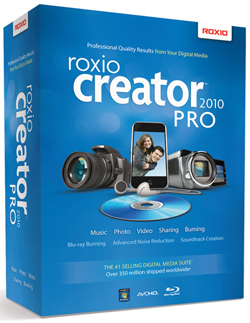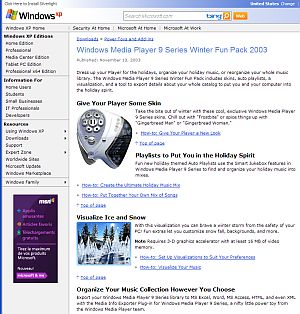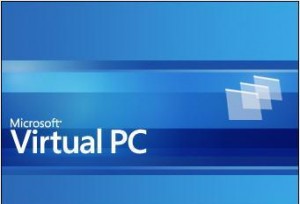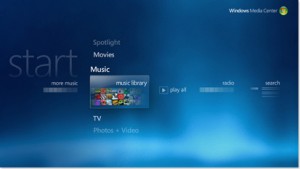 If you are into the serious business (or interests) of editing meta data for digital pictures, you may want to take a look at this tool called ExifTool. This free software basically can do anything about the “tags” of digital pictures, copying, renaming, standardizing and what not. This is a powerful tool with all kinds of parameters and built-in flexibility. It is not for everyone, though, as using it does require some computer knowledge especially for its advanced features. Do give it a try if you run out of options.
If you are into the serious business (or interests) of editing meta data for digital pictures, you may want to take a look at this tool called ExifTool. This free software basically can do anything about the “tags” of digital pictures, copying, renaming, standardizing and what not. This is a powerful tool with all kinds of parameters and built-in flexibility. It is not for everyone, though, as using it does require some computer knowledge especially for its advanced features. Do give it a try if you run out of options.
Author Archives: jmah
Apple CEO Steve Jobs resigns
 Steve Jobs stepped down as Apple CEO on Wednesday. Here is his resignation letter.
Steve Jobs stepped down as Apple CEO on Wednesday. Here is his resignation letter.
To the Apple Board of Directors and the Apple Community: I have always said if there ever came a day when I could no longer meet my duties and expectations as Apple’s CEO, I would be the first to let you know. Unfortunately, that day has come.
I hereby resign as CEO of Apple. I would like to serve, if the Board sees fit, as Chairman of the Board, director and Apple employee.
As far as my successor goes, I strongly recommend that we execute our succession plan and name Tim Cook as CEO of Apple.
I believe Apple’s brightest and most innovative days are ahead of it. And I look forward to watching and contributing to its success in a new role.
I have made some of the best friends of my life at Apple, and I thank you all for the many years of being able to work alongside you.
Steve.
HP kills TouchPad, looks to exit PC business
 NEW YORK (CNNMoney) — Hewlett-Packard is taking a hatchet to its business and doing some radical restructuring.
NEW YORK (CNNMoney) — Hewlett-Packard is taking a hatchet to its business and doing some radical restructuring.
The company said Thursday that it is looking to spin off its industry-leading but struggling personal computer business. HP also killed off the TouchPad tablet it launched last month, as well as its webOS smartphone line.
The move essentially leaves for dead the webOS software HP got by acquiring Palm last year, though the company said it will continue trying to “optimize the value” of its purchase. Though the move was unexpected, it’s not all that surprising: Despite a huge marketing campaign, TouchPad sales struggled so much that HP almost immediately cut the tablet’s price by $100. HP said none of its webOS products reached the company’s internal sales targets.
Click here to read the whole article.
Missing Windows Media Codec
 There are so many different codecs these days, supporting different formats of videos and audio. And there are also software trying to overwrite each other during its installation on your computer. It is not uncommon to find out one day, when you try to play a video file in certain format, the computer complains a specific codec is missing.
There are so many different codecs these days, supporting different formats of videos and audio. And there are also software trying to overwrite each other during its installation on your computer. It is not uncommon to find out one day, when you try to play a video file in certain format, the computer complains a specific codec is missing.
Normally you can reinstall the software that supports the missing codec and the problem should be fixed. In this case that I would like to talk about, the missing codec is the Windows Media Series 9 codec (WMV3). The codec is included when you install Windows Media Player. Alternately the codec is downloaded from the Microsoft site when a video file of this format is first played.
In some rare cases, Windows Media Player cannot and will not automatically download the codec. And there is no common software you can install to get the WMV3 codec. A solution is to uninstall the current version of Windows Media Player (in this case, version 11) and rollback to the previous version. When the old version plays the first file with WMV3 codec, it will download the codec from the Microsoft site. Once that’s done, you can upgrade the media player back to the current version.
Gallery2 Broken Thumbnails
 When using ‘Upload Applet’ to upload pictures to Gallery2, broken thumbnails may occur unpredictably. A maintenance will need to done to rebuild all thumbnails. The problem may be resolved by changing the priority of which graphic toolkit to use in the Administrator’s Site Admin page.
When using ‘Upload Applet’ to upload pictures to Gallery2, broken thumbnails may occur unpredictably. A maintenance will need to done to rebuild all thumbnails. The problem may be resolved by changing the priority of which graphic toolkit to use in the Administrator’s Site Admin page.
If NetPBM is the highest on the list, try lower it down below Gd. ImageMagick is not activated in this case. (Note: the hosting service provider is 1and1.)
Roxio Creator 2010 Pro
 If problems were encountered during installaiton of Roxio Creator 2010 PRO on a Windows 7 64-bit system, chances are it can be fixed by running the setup.exe file under compatibility mode (Vista Service Pack 2 in this case).
If problems were encountered during installaiton of Roxio Creator 2010 PRO on a Windows 7 64-bit system, chances are it can be fixed by running the setup.exe file under compatibility mode (Vista Service Pack 2 in this case).
For this specific problem, the error was tracked down to a file 1033.mst that could not be located during installation. Once the setup was run under the above-mentioned compatibilty mode, the installaion went smoothly without any issue.
VideoWave, the video editing module of Roxio Creator suite, may encounter problems when editing an MPEG-2 video clip if Internet Explorer version 9 is installed on the computer. When trimming an MPEG-2 video clip, the play button simply will not respond. Uninstalling IE9, which should automatically rolls back to v8 will resolve the problem.
WMP 9 Series Winter Fun Pack 2003
 This free download from Microsoft may be old but contains some very useful tools. Media Info Explorer allows you to export a list of all songs and the associated attributes in the media player to an external program like Excel. The list can then be tailored to whatever your requirements are. This works for WMP 11 as well on an XP system. Tests are required for Vista and later releases of Windows.
This free download from Microsoft may be old but contains some very useful tools. Media Info Explorer allows you to export a list of all songs and the associated attributes in the media player to an external program like Excel. The list can then be tailored to whatever your requirements are. This works for WMP 11 as well on an XP system. Tests are required for Vista and later releases of Windows.
Related to this: be careful when updating a playlist (.wpl) in WMP. You need to actually show the list of songs in the library and drags them to the list pane. You cannot just drag the play list to the list pane and save it as an updated play list.
How to get sound working on Virtual PC 2007 with Vista guest OS
 (This applies to hosting Windows 7 as well). Virtual PC 2007 added a new sound system specifically for using Vista as a guest and host OS. But when you install Vista as a guest OS, there is no sound! A search on Google and Live Search didn’t turn up anything about how to use it.
(This applies to hosting Windows 7 as well). Virtual PC 2007 added a new sound system specifically for using Vista as a guest and host OS. But when you install Vista as a guest OS, there is no sound! A search on Google and Live Search didn’t turn up anything about how to use it.
Eventually I found that after you install the VM Additions, the sound driver is silently copied into the guest OS’s “C:\Program Files\Virtual Machine Additions” folder. All you need to do to get sound working is “update” your audio controller driver within your Vista guest OS and tell it you Have Disk… and point it at that folder and voila! Beautiful sound. (without any restarts either).
Migrating MySQL from v4 to v5
 Two key things about migrating your site from MySQL v4 to v5
Two key things about migrating your site from MySQL v4 to v5
(1) In oder to preserve the unicode encoding of foreign characters, make sure that the v5 database was created with DEFAULT CHARACTER SET utf8 and COLLATE utf8_general_ci (or altered to the above properties after creation) before re-creating the tables and restoring the data.
(2) Use plug-ins to backup and restore data instead of using the Export function of phpmyadmin; funny characters can appear if using the latter method for migrating data from MySQL v4.
Video Playlists for Vista Media Center

Vista Media Center
This is something that is not a secret, but is also not very widely known. I would imagine that it is because not too many people have a use for it or know how it could be used.
Of course, I’m talking about creating video playlists that can be used within Vista Media Center. I’m sure everyone knows what a playlist is, as they are most commonly used for music playback on just about any media player available. Anyway, I don’t like rambling that much, so I’ll get right into it. Continue reading